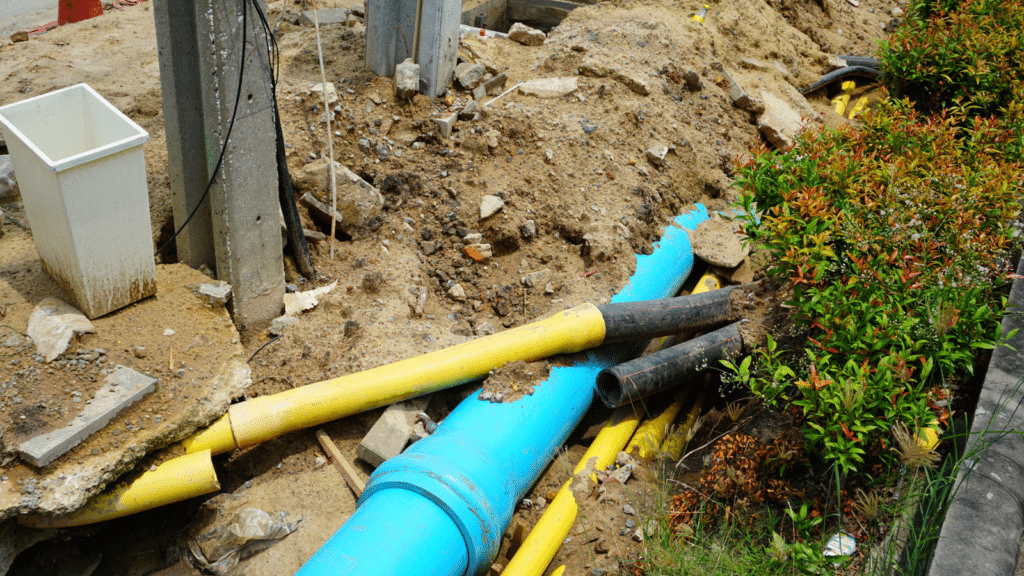
How Weather and Soil Conditions Affect Sewer Line Health
Sewer lines are the hidden lifelines of any property, working quietly beneath the ground to transport wastewater away from homes and businesses. Because they are buried and out of sight, many homeowners don’t realize that factors like weather changes and soil conditions can have a direct impact on the health and longevity of their sewer system. Understanding how these natural elements influence sewer lines is the first step toward prevention and timely sewer line repair.
The Impact of Heavy Rainfall
Excessive rainfall often leads to soil saturation, which puts added pressure on underground pipes. As the soil becomes waterlogged, it expands and shifts, pushing against sewer lines. Over time, this stress can cause cracks or misalignments in the pipes. In areas prone to flooding, the problem becomes more severe because excess water can infiltrate small cracks, leading to blockages, backups, and even complete system failure. During rainy seasons, preventative checks can help find damage early on, before it gets too bad to fix.
Soil Composition Matters
The type of soil surrounding your sewer lines plays a significant role in their overall condition. For example, clay soils tend to expand when wet and shrink when dry. This constant movement puts strain on pipes, often leading to breaks or collapses. Sandy soils, on the other hand, may wash away during heavy rains, leaving little support for sewer lines and causing them to sag or disconnect. Knowing what type of soil is around your property allows you to better anticipate potential sewer line challenges and schedule maintenance accordingly.
Seasonal Temperature Changes
Extreme weather fluctuations can be just as damaging as rain or soil movement. In colder climates, freezing temperatures cause the ground to contract. When pipes freeze, they may crack or burst, resulting in severe leaks. Meanwhile, hot, dry summers can cause soil to shrink and settle, creating gaps where sewer lines may shift or bend. These seasonal patterns of expansion and contraction place ongoing stress on sewer systems, often resulting in the need for professional sewer line repair.
Tree Roots Seeking Moisture
Weather and soil conditions also influence tree root growth. During extended dry periods, roots aggressively seek out moisture, often finding it in sewer pipes. Even the smallest crack in a line can attract roots, which eventually infiltrate and block the pipe. Once roots establish themselves, they can cause severe blockages, leading to backups inside the home. Preventing this issue often requires regular root inspection and sometimes trenchless sewer line replacement methods.
Signs of Weather-Related Sewer Problems
People who own their own homes should be on the lookout for signs that their sewer lines may be getting damaged by weather or dirt conditions. Slow drains, foul odors, gurgling noises, or wet patches in the yard can indicate problems underground. Because these signs can be subtle, many property owners don’t notice them until significant damage has already occurred. Regular inspections, particularly after extreme weather events, are essential for catching problems early and avoiding costly emergencies.
The Value of Professional Maintenance
While soil and weather conditions are beyond a homeowner’s control, timely action can significantly reduce the risk of major sewer line damage. Professional plumbers have the tools to inspect underground systems without extensive digging, using cameras and advanced detection technology. They can identify potential weaknesses caused by shifting soil, heavy rains, or seasonal changes and recommend appropriate solutions. Regular maintenance, combined with proactive monitoring, extends the life of sewer lines and minimizes the chances of needing emergency sewer line repair.
Conclusion
Weather and soil conditions may seem like forces of nature beyond our influence, but their effects on sewer lines are very real. From soil expansion and contraction to heavy rains, root intrusion, and seasonal changes, these natural factors can take a toll on your plumbing system. Homeowners who stay aware of these risks and invest in preventive care will not only protect their property but also save money by avoiding major repairs down the road. In the long run, professional guidance and consistent monitoring are the best defenses against weather- and soil-related sewer line damage.





